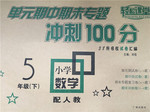题目内容
【题目】There were s______ to get out the burning car.
【答案】见解析
【解析】struggling

 轻松课堂单元期中期末专题冲刺100分系列答案
轻松课堂单元期中期末专题冲刺100分系列答案【题目】用所给短语的适当形式填空
abundant in, a great deal, out of the question, in the company of, a variety of, for all ages and tastes, close up, parallel to, settle in, day in and day out |
【1】 Tibet is a land __________ a diversity of minerals.
【2】 You can't go to the wedding in that old shirt—that's quite __________.
【3】 She cooked __________ and did cleaning for forty years.
【4】 TRAVEL JIU ZHAIGOU offers tour __________Everyone no matter he is young or old will enjoy it.
【5】 As for maths , he knows __________ more than I do.
【6】 The painting looks better from a certain distance than __________
【7】 The girls come from __________ different back-grounds.
【8】 The road runs __________ the railway.
【9】 His uncle chose to __________ the countryside.
【10】 He had a pleasant evening __________ friends .